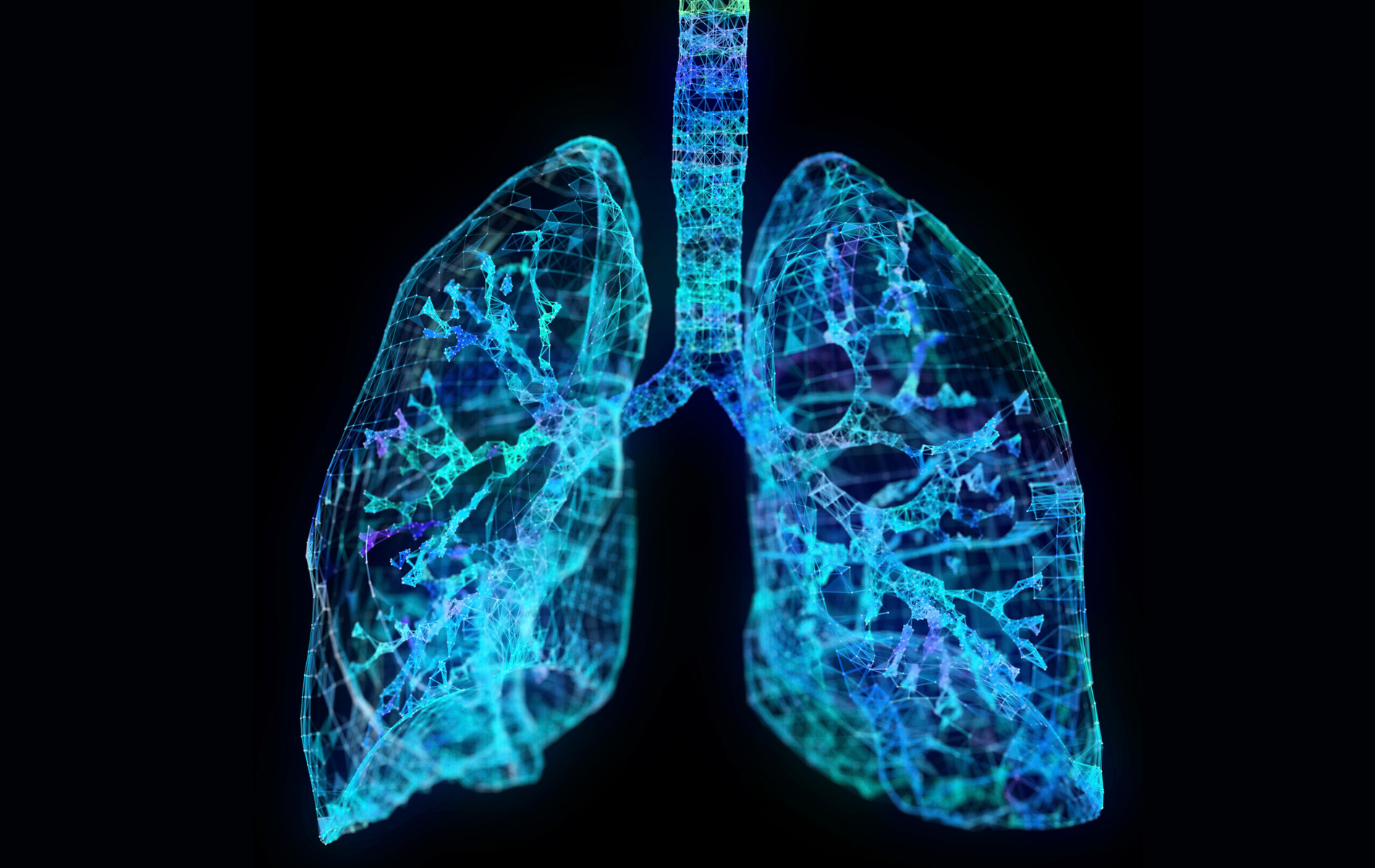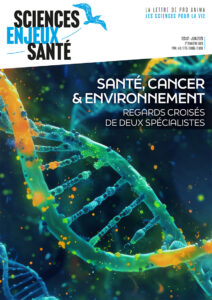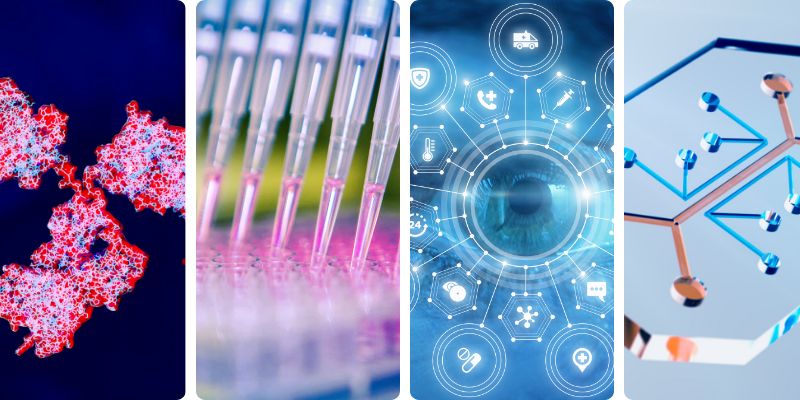
AI-Driven Breakthroughs in Drug Discovery, Are the 3Rs still an adequate ethical framework?, Pharma companies keen on alternatives to animal testing, and more
News on non-animal methods
MAY 6 - 10, 2024NEWS, REPORTS & POSITION STATEMENTS
1. AI-Driven breakthroughs in drug discovery and teatment optimization
A groundbreaking achievement in drug development has been realized by Insilico Medicine and Lunit with AI tools independently devising a new drug for idiopathic pulmonary fibrosis, a life-threatening lung condition.
This comes amidst recent oncological advances, where AI-powered spatial analysis of tumor-infiltrating lymphocytes predicted treatment response in patients with head and neck squamous cell carcinoma (HNSCC), guiding personalized intervention decisions and accelerating new treatment discovery for various diseases. It appears that the AI revolution in the context of medicine is improving patient outcomes and speeding up the discovery of new therapies across the board.
2. SAFE consortium : Biannual project update
The SAFE consortium is a research project developed by Ingrid Visseren-Hamakers, Professor of Environmental Governance and Politics at Radboud University and Merel Ritskes-Hoitinga, Professor of Evidence-based transition to animal-free innovations at Utrecht University. It is a transdisciplinary project that aims to accelerate the transition to animal-free safety assessment.
Last week, SAFE stakeholders had the opportunity to connect and deepen their understanding of their role in the transition to animal free safety assessment and gather pertinent updates. Next steps will be contributing to the ongoing European Commission roadmap for phasing out animal testing, developing transition analyses of the regulatory chemical and pharmaceutical safety assessment system(s), gaining experience with the phenomenon of roadmaps, and more.
3. Do the 3Rs still offer an adequate ethical framework ?
Progress in technical and biomedical research, along with the changing status of animals in many societies, challenges the view of the 3Rs principle as a sufficient and effective approach to the moral challenges set by animal use in research.
A recent article published in the journal Frontiers in Veterinary Science focuses on three core questions and perspectives in the debate over the advancement of the 3Rs : (1) What scientific innovations are needed to advance the goals of the 3Rs ? (2) What can be done to facilitate the implementation of existing and new 3R methods ? (3) Do the 3Rs still offer an adequate ethical framework given the increasing social awareness of animal needs and human moral responsibilities ?
4. Organoids stand out as stand ins in drug development
Organoid development has been accelerating thanks to the introduction of commercial technologies. According to a market research study issued in 2023 by Insight Partners, the organoid market will register an annual growth rate of 22% in the coming years and reach a value of $12 billion by 2030.
Read testimony of many stakeholders using and developing organoids : Hilary Sherman, senior applications scientist, Corning Life Sciences, Dan Rocca, PhD, research leader and Louise Brackenbury, PhD, science director, both from Charles River Laboratories, Shantanu Dhamija, PhD, vice president, strategy and innovation, Molecular Devices, and Lorna Ewart, PhD, Emulate’s CSO.
INTERVIEWS, NOMINATIONS & AWARDS
5. AVITI24 : A multi-omic platform to further cancer research
Shawn Levy is Chief Scientific Officer and Senior Vice President of Applications at Element Biosciences (CA, USA), leading a multidisciplinary team supporting applications development and external partnerships and collaborations.
In this interview, Shawn discusses their new platform, AVITI24, which combines sequencing with multi-omic analysis to give deeper insights into cancer biology.
TOOLS, PLATFORMS, CALLS
6. Discover two new tools from Wyss Institute NodeTX : Growing lymph nodes to treat cancer
Patients who do survive solid cancers seem to have a trick up their immune systems’ sleeves : their bodies form new tumor-fighting lymph organs resembling lymph nodes either within or near their tumors.These tertiary lymphoid organs (TLOs) work in two ways : they suppress the growth of tumors and enlist the body’s native immune cells to directly attack the tumors.
Using inspiration from nature and their combined expertise in immunology and tissue engineering, a Team at the Wyss Institute has created NodeTX, an in vitro model of human TLOs and used it to study how they form, are populated with immune cells, and affect the growth of pancreatic tumors, one of the deadliest forms of cancer for which there are no treatment options beyond surgery. The NodeTX team is currently seeking collaborations with industry for therapeutic development and with investors interested in advancing the technology into the clinic.
7. Modeling the Airway-on-a-Chip 2.0 for inflammation studies in Cystic Fibrosis
Cystic Fibrosis is a genetic disease caused by mutations in the cystic fibrosis transduction regulator (CFTR) gene, affecting various tissues, including the respiratory epithelium. With over 2,000 CFTR mutations identified worldwide, a lack of treatment options is a real problem. Moreover, the inflammatory impact of available drugs remains unclear.
In collaboration with the Wyss Institute and the Department of Medical, Oral and Biotechnological Sciences (DSMOB), Dr Roberto Plebani could study CF inflammation using Organ-on-a-Chip technology, revealing insights into immune cell behavior. In a new project funded by the Italian Cystic Fibrosis Foundation, he is now using isolated endothelial cells from fragments of pulmonary arteries obtained from explanted CF patient lungs to enhance the current version of the CF Airway-on-a-Chip, transforming it into a CF Airway-on-a-Chip 2.0.
INDUSTRY, BIOTECH & PARTNERSHIPS
8. Vox Pop Pharma — companies keen to find alternatives to animal testing
Charles River Laboratories International, Inc. revealed in April its Alternative Methods Advancement Project (AMAP), which it said is a strong initiative aimed at changing drug discovery and development by exploring alternatives to animal testing, as part of $500 million investment in driving change.
The article also highlights opinions and engagement of VMedX, CN Bio, and VeriSIM Life, Pharma companies leaders towards the use and implementation of non-animal tools.
9. 3D-Printed tumors replicate biopsies of cancer patients
The limitations of organoid systems complicate preclinical research and the development of new therapeutics. Indeed, therapeutics may behave differently in organoid systems than they do in the human body. Such discrepancies are especially problematic if individualized insights are needed, for example, in efforts to personalize the care of cancer patients.
Carcinotech is addressing that challenge by 3D printing tumors that more closely mimic human biopsies. It does this by including a robust complement of cells and, soon, the tumor vasculature. This results in more physiologically relevant, human-based tumor tissues and also provides high quantities of 3D-printed tumors from individual tumor biopsies. Therefore, scientists can perform more assays faster, winnowing out ineffective candidates early.
10. Bi/ond and bit.bio collaboration generates 3D in vitro model for studying Duchenne Muscular Dystrophy (DMD)
Bi/ond, a TechBio company empowering pharmaceutical companies to make drug decisions through the fusion of hardware, machine learning, and tissue engineering, and bit.bio, the company coding human cells for novel cures, announced the generation of a 3D in vitro model for studying Duchenne Muscular Dystrophy (DMD), stemming from their collaboration.
SCIENTIFIC DISCOVERIES & PROTOCOLS
11. A model based on mother-children paired data to estimate the dynamic early life exposure to PFAS
In utero and children’s exposure to per- and polyfluoroalkyl substances (PFAS) is a major concern in health risk assessment as early life exposures are suspected to induce adverse health effects.
As part of an european collaboration including the PARC project, a new study used the HELIX cohort, involving 1,239 mother – child pairs with measured PFAS maternal and child plasma concentrations to estimate children’s exposure (from birth to 12 years old) to PFAS, using a Physiologically-Based Pharmacokinetic (PBPK) modelling approach.The model predicted an increase in plasma concentrations during fetal development and childhood until 2 y.o when the maximum concentrations were reached.
12. Scientists grow brain-like tissue with complex connections in a dish
Studying the exact mechanisms of brain development and function has always been a challenge for researchers. Animal studies are limited by differences in brain structure and function between species, while brain cells grown in the lab often lack the characteristic connections found in the human brain.
A team of Japanese and French researchers has developed a technique for connecting lab-grown brain-mimicking tissue in a way that resembles the circuits found in the human brain. This advancement brings us one step closer to understanding the complex workings of the brain and could potentially lead to new treatments for neurological and psychiatric conditions.


